A Fly-Fishing Festival You Do NOT Want To Miss
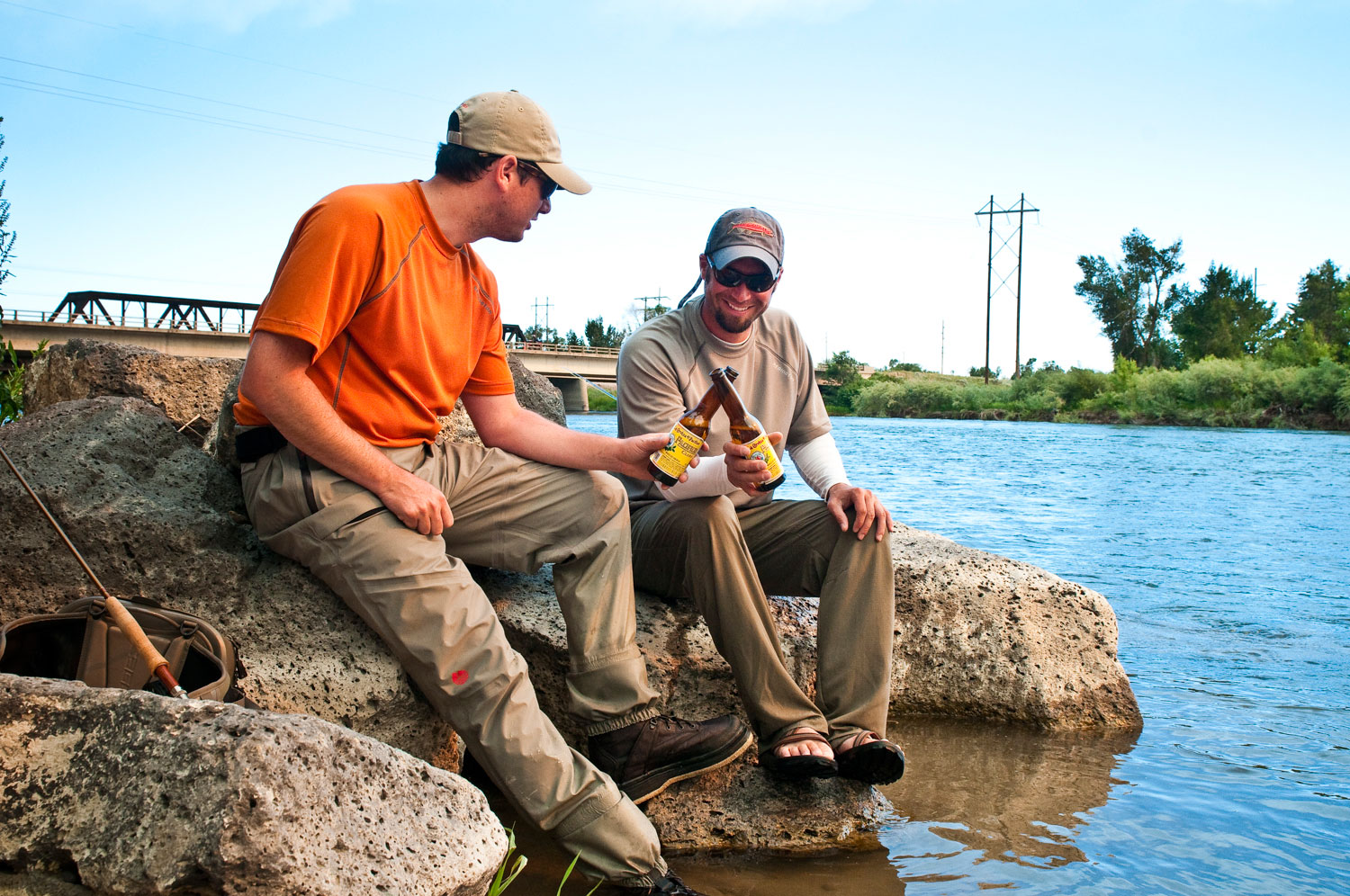
By Carter Lyles
BLACKFLY OUTFITTERS, A FLY-FISHING SHOP IN JACKSONVILLE, FLORIDA WILL BE HOLDING THEIR FIRST ANNUAL BLACKFLY FLOODTIDE FESTIVAL.
When: Saturday August 30th from 2-5pm
Where: Blackfly Outfitters, 11702 Beach Blvd., Suite 103, Jacksonville, FL 32246
Why You Should Be There:
Gink and Gasoline will be present with stickers and shirts.
There is a freaking BBQ Battle between Andrew Mizell and Captain John Bottko for the “Best BBQ Smoked Ribs.”
Live music
You will be able to test out the IFTD “Best in Show” Sage Salt in a series of different weights.
Fly Tying Demo by the pros…
East Cape Skiffs will bring down their new flats boat, the East Cape Glide…
Crazy ole Paul Puckett will be there with his crew from Floodtide Co. And he will be bringing LOTS of apparel with him.
Free Fly Apparel will be bringing their unique bamboo fabric clothing line…
You can donate your favorite flood tide fly for a chance to WIN all of the donated flies in a custom box.
There will be an open forum about floodtide fly-fishing directed by the Blackfly Pro Staff
Oh and one last thing…
GINK AND GASOLINE WILL BE THERE.
See ya in Jacksonville!
For more questions please call Blackfly Outfitters at (904) 997-2220
Read More »What a Gnarly Mug
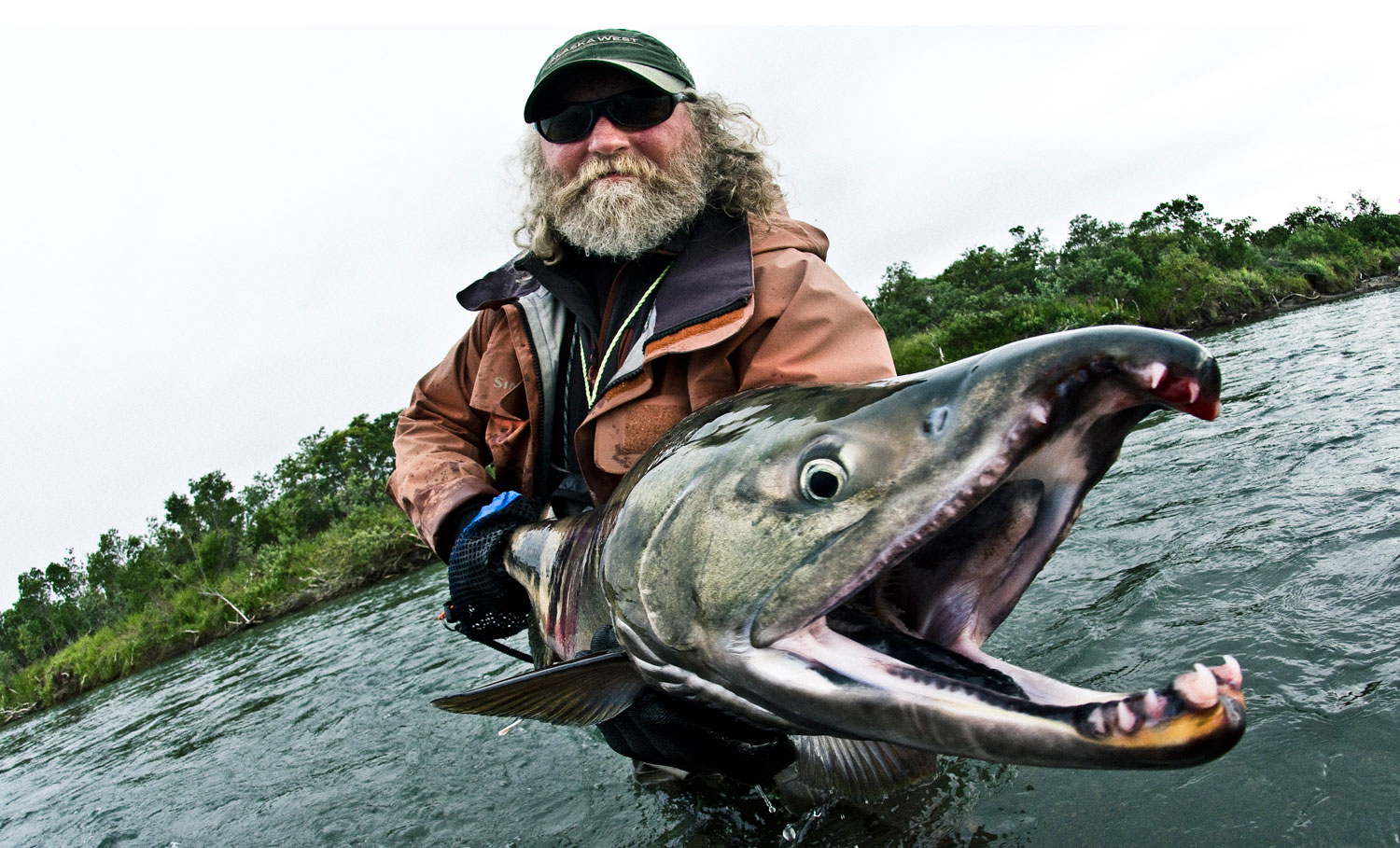
NOW THAT’S A FACE.
Sewn out of saddle leather with a crooked jaw, gnarly teeth and bugged out eyes. That face has seen some miles. It’s ready for battle. It’s won its share and lost a couple too, all in the name of getting laid. It’s not the face he was born with, it’s the kind of face you have to earn. It’s what an Alaska river does to you. It’s a hard tough face for a hard tough customer.
But that’s just Hawkeye and we love him anyway. That chum salmon he’s holding has a pretty gnarly mug too.
Read More »Limit False Casting to Improve Your Casting Stroke
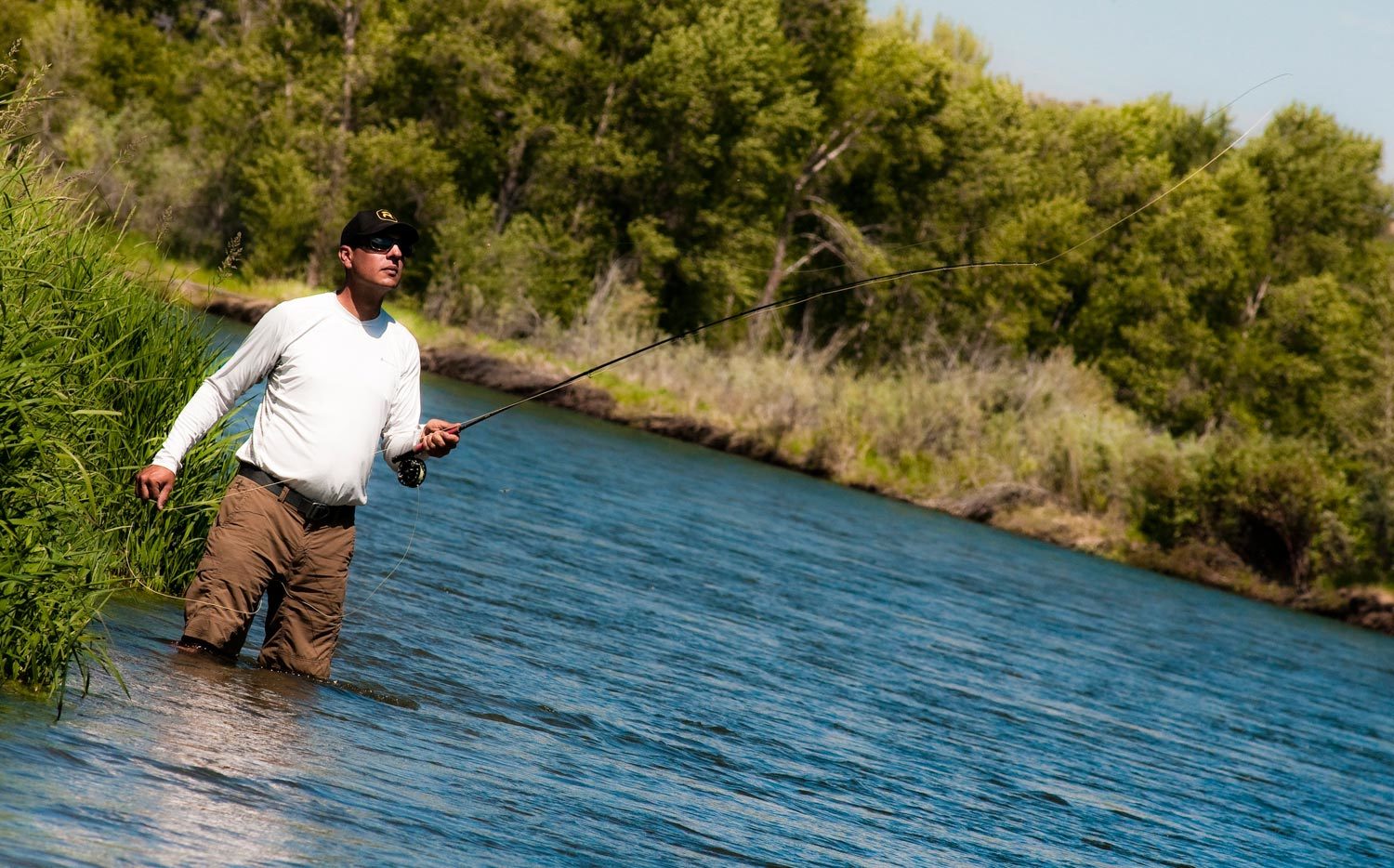
When we first start out fly fishing and we’re still learning the mechanics of the casting stroke, it’s very common for many of us to make excessive false casts in between our presentations. For some of us, excessive false casting is an excuse to impart quality control during our fly casting, for others, we justify it for the simple fact that we just love casting a fly rod. Whatever the reasons may be for excessive false casting, it needs to be kept in check, if anglers wants to fly fish at their best. If you’re currently in the beginner or intermediate skill level range, one of the best ways to take your fly fishing to the next level, is to make yourself minimize your false casting on the water.
Read More »Sunday Classic / Fly Fishing The Zombie Apocalypse
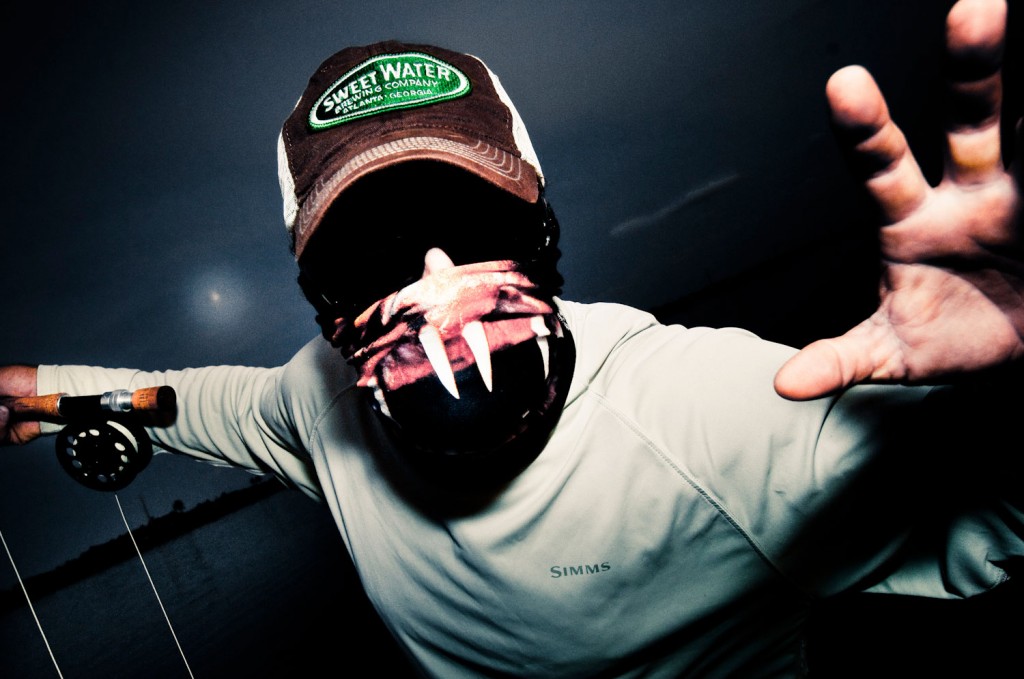
WILL SOMEONE PLEASE INVENT THE ZOMBIE APOCALYPSE VIRUS, BECAUSE I AM SO READY!
Do you ever wonder why the Zombie Apocalypse is so popular with twenty-somethings? Seriously, you get more than two of them in a room and there’s going to be an hour of discussion about where to go and what to do when the Zombie Apocalypse comes. My wife is even into it and I can hardly get her to watch scary movies on Halloween. It’s everywhere in pop culture these days. AMC’s “The Walking Dead”, after the comic of the same name, is the most popular show on TV. From dyed-ini-the-wool hipsters to Star Wars nerds, every young person in America is crazy for flesh eating freaks and I think I can tell you why.
First of all, if you’re not familiar with the genre, here’s the basic plot of every zombie thriller since “Night of the Living Dead”. The dead come back to life with limited intelligence and motor skills and a ravenous hunger for human flesh. The only way to “rekill” them is to destroy their infected zombie brain, which is generally ridiculously easy. They are only really dangerous in large groups and it falls on the ragged bands of survivors to dispatch them in the funniest and goriest manner possible. We never know how this all started but it’s generally assumed that it’s the result of some government experiment gone wrong. Oh, and by the way, if you get bit you’re now a zombie and obligated to eat your friends. I think that pretty much covers it.
Here’s what strikes me about pretty much every zombie story I’ve ever seen and why I think they are so popular with the college-age crowd. When you find yourself in your little band of misfit survivors, usually no more than a dozen average joes from all walks of life, look around the campfire. Here’s what you’re not going to see. A politician, a banker, a lawyer, an oil baron, a televangelist, an insurance company executive, a talk radio host, a vapid celebrity, a snooty barista, that bitchy woman from the neighborhood association or pretty much anyone else responsible for the giant mess that the real world is in today. That’s right, somehow the brainless ghouls got it right. They staggered straight out and ate all the people who make this world almost unbearable to live in. So, is it any wonder that every young adult about to graduate college and go out to face double-digit unemployment, a soaring tax burden, overpriced healthcare and ecological disaster at every turn is enamored with the idea of seeing ninety-nine percent of humanity become an all you can eat asshole buffet. Frankly, it’s starting to sound pretty damn good to me!
Let’s take another look around that campfire and, once we’re over the shock of finding that the guys from the pebble mine aren’t there, let’s see who’s left behind. A couple of guys that know how to hunt and fish and fix cars. Maybe a good cop and an independent farmer and a couple of fairly hot outdoorsy gals who know their way around a shotgun. That’s a camping trip I’d like to go on! So what the hell, I’ll play along. After all, I’ve got all kinds of guns and my my kid rocks a katana, I’m sure we’re going to be just fine. So here’s the Cahill family plan for the Zombie Apocalypse.
Read More »Saturday Shoutout / A Dog Named Kalik
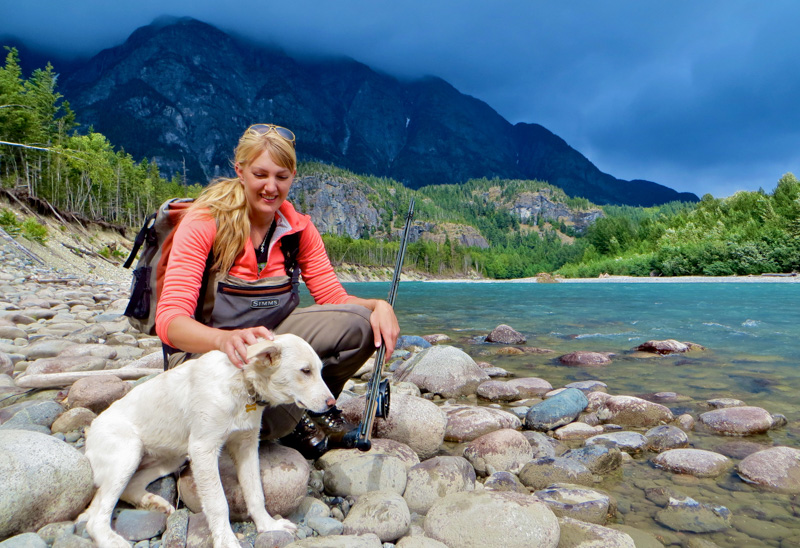
THIS WEEK’S SHOUTOUT IS NEAR TO MY HEART.
Anyone who knows me knows that I’m a sucker for dogs, especially Bahamian Potcakes. They also likely know that my two favorite place to fish are South Andros and The Dean River in B.C. What everyone doesn’t know is that I am truly, madly, deeply in love with a certain little potcake named Kalik.
I was there on South Andros when Kara Knight adopted this awesome little puppy. It’s a truly great story and far too modestly told. Kara saved this sweet little dog, who was very sick, from a certain end. Now she’s Kalik The Steelhead Dog, and princes of The Dean.
Potcakes are the worlds best dogs. If there’s room in your home for one you should not hesitate. Check out Kara’s story and follow the link to learn how you can adopt a Bahamian Potcake.
A Dog Named Kalik
Read More »The Land Before Time
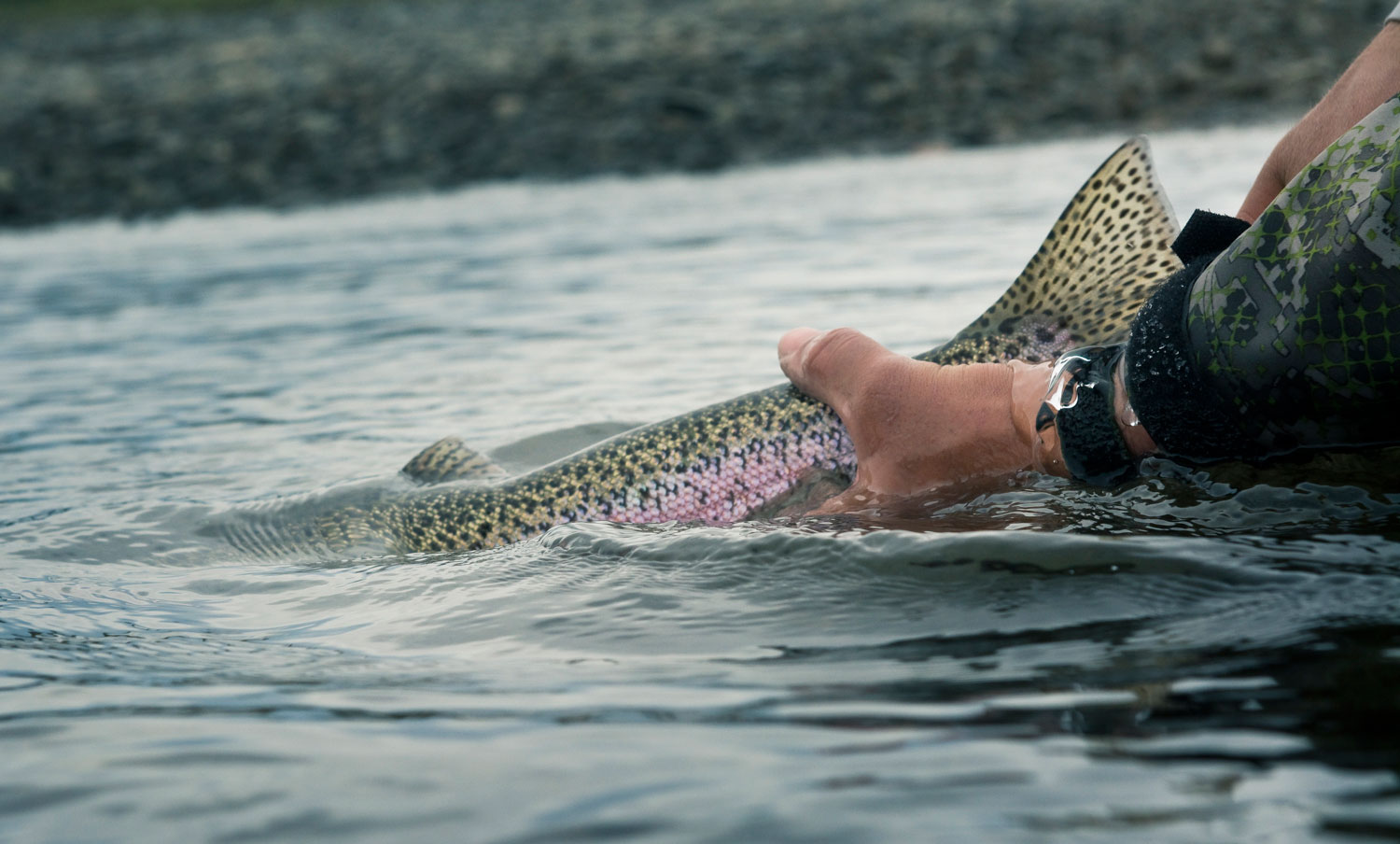
By Carter Lyles
THE UNITED STATES GOVERNMENT IN 1867 BOUGHT THE 49TH STATE,
twice the size of Texas, for two cents an acre from the Russian Empire, who feared that it could be seized by Britain if war were to break out. The territory officially became part of the United States on January 3rd of 1959 under the Eisenhower Administration.
If you have ever been to the great state of Alaska, then you would know that it is literally like taking a step back in time. With just 1.2 persons per square mile (quickfacts.census.gov) you are truly in complete touch with the good Lord’s work. Tremendous mountains with snow capped tips, astonishing rolling green valleys as far as the eye can see, a plethora of the most startling plant life on the Earth, an astronomical wonder of breathtaking lights in the sky that indicate you are far away from human intervention… The rivers wind their way throughout the mystic grounds carrying large populations every summer of big, fat, healthy salmon who travel miles up river to spawn.
If this proposed plan, known as “Pebble Mine,” were to take affect, it would pollute Bristol Bay tremendously, one of the worlds, and Alaska’s, most productive wild salmon strongholds.
The Pebble Limited Partnership, consisted of Anglo American (whom recently backed out) and Northern Dynasty Co., discovered that The Pebble deposit, located in the headwaters of the Kvichak and Nushagak Rivers, holds massive amounts of gold, copper and molybdenum. The Kvichak and Nushagak Rivers are two of the eight major rivers that run into Bristol Bay. Their proposal is to construct a Pebble Mine complex on these rivers that would span twenty square miles in the Bristol Bay watershed.
The Pebble Mine would also demand the world’s largest earthen dam, 700 feet high and several miles in length, be built. This dam would hold back a 10-square-mile containment pond that carries from 2.5-10 billion tons of
Read More »Using XL Trout Beads As Attractors In Your Tandem Rig
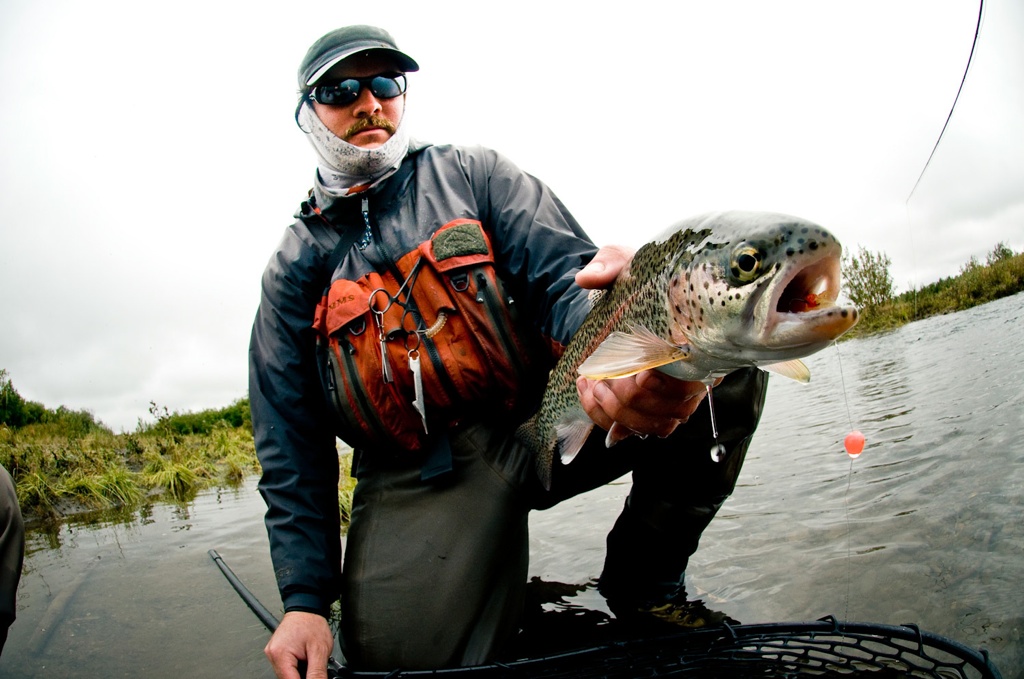
Back in 2006, I spent a season guiding in Alaska at Mission Creek Lodge. It was a great experience and a hell of a lot of hard work, but I held my own and ended up representing well for Southeastern fishing guides. That doesn’t make me an expert on Alaska fishing by any means, particularly when compared to bad ass veteran alaskan guides like Andrew Grillos, TJ Zandoli, and Nathan Cornelius. That season in Alaska I was blessed with the opportunity to pick the brains and learn from some of the best bush guides in the area. One lesson I learned right off the bat was using an extra large attractor trout bead as my lead fly in my tandem bead rigs. Point being, matching the hatch and size of the eggs isn’t the only factor that plays into getting big trout to eat. The attraction factor you get by using a 10-12mm trout bead often sparks initial interest from big bows, persuading them to move in for a closer look. In most cases they’ll end up eating the smaller more appropriately sized bead, but it became very obvious to me how important a role, big attractor beads played in creating hookups.
Since then, I’ve experimented using
Read More »Johnny’s IFTD Rundown: Fly Fishing Gear You’ll Love
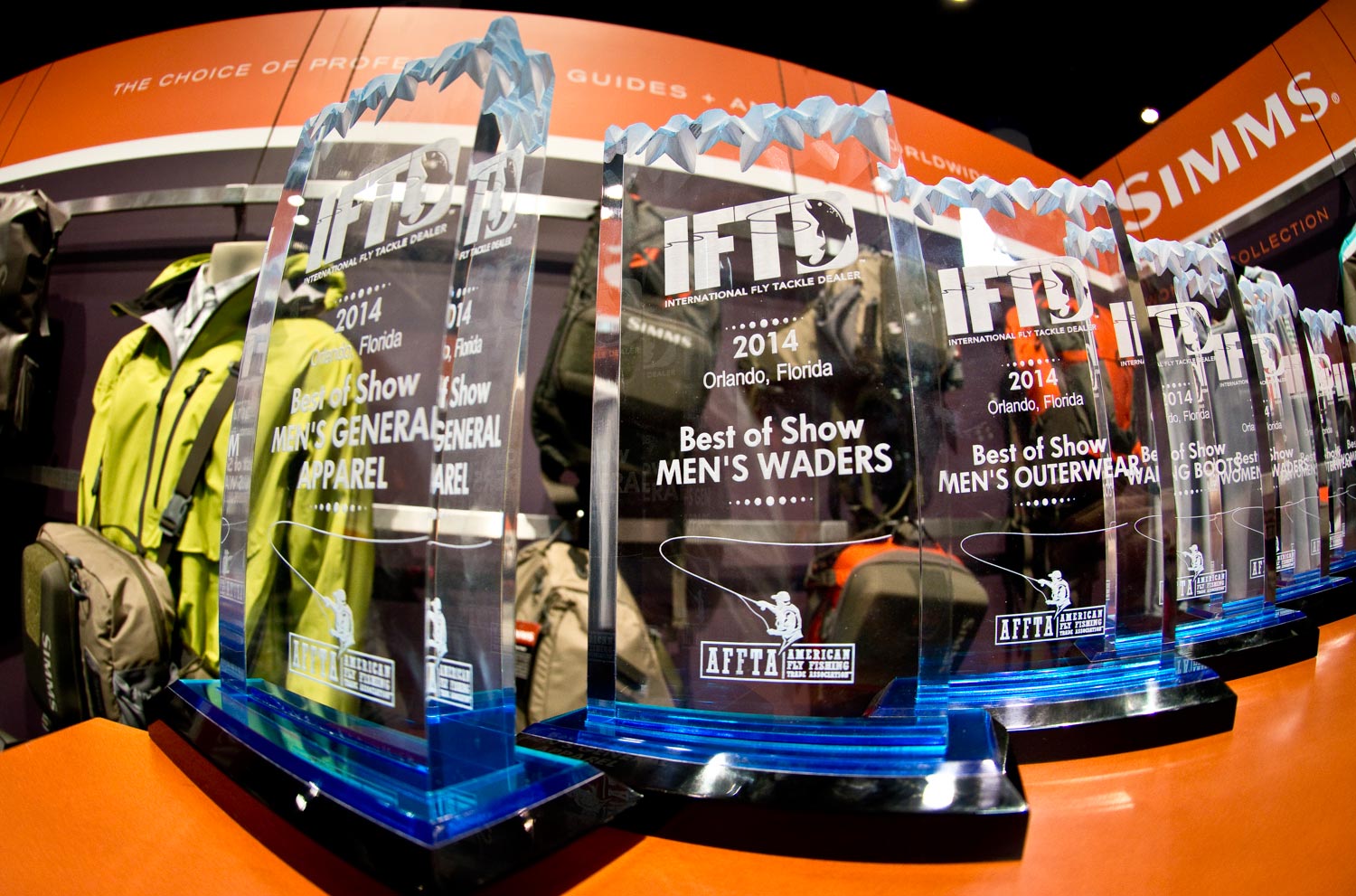
I JUST GOT HOME FROM IFTD AND I’LL TELL YOU ONE THING, FLY FISHERMEN ARE GOING TO HAVE SOME PRETTY SWEET STUFF TO TRY OUT NEXT YEAR. HERE IS A BRIEF OVERVIEW OF WHAT I SAW AND WHAT I LIKED.
Fly Lines
There were a ton of new fly lines from companies like Scientific Anglers, Rio and Airflow. There were a lot of innovative and specialty trout lines that should help you get more and more out of one fly rod. While I’m in the business of selling rods, its pretty cool to be able to switch out fly lines and make one rod much more versatile. I’m really excited to get some of these lines on the water for a real test and I’ll hold off on judgment until then.
Rods
I was very impressed with a few new rods at the show. One of my favorites was the Winston Nexus. The Nexus is a 100% American made rod that casts beautifully and only costs $475. For all of you who are familiar with Winston, this rod is a steal. I cast most of them, but my favorite was the 8’ 4wt, it was deadly accurate and I can’t wait to put it to a real test on the river and not in a casting pool.
I was happy to see Sage using their Kinetic Technology in their saltwater rods. The appropriately named “Salt” is a flats fishing beast. Its light in the tip, super accurate and has the backbone to really put the wood to our saltwater friends. This rod is a home run in my opinion and I can’t wait to put it to the test.
Tippet
Hatch has expanded from reels into fly lines, tippet, shock tippet and leaders. Further testing needs to happen, but if their lines are anything like their reels, they will kick ass.
Packs and Bags
Fishpond continues to be an innovative force in the fly fishing world. Their new sling packs and waterproof bags look great and are both functional and environmentally friendly. It’s worth mentioning that the sling pack is made to hold a pistol. That’s different.
Vedavoo is a pretty kick ass company, specializing in high end, American made packs and bags. Their well thought out design fits like a glove and its customizable features give you the option to make any kind of sling pack, hip pack or chest pack perfect for you. Check them out. Its good livin.
Sunglasses.
I’m sure you all know this, but eye wear is important. Very important. I would rather sell someone a $250 pair of sunglasses and a $600 dollar rod then a $800 rod and a $50 dollar pair of glasses. Why? It is very hard
Sunday Classic / Keeping a Buffer Between You and the Fish
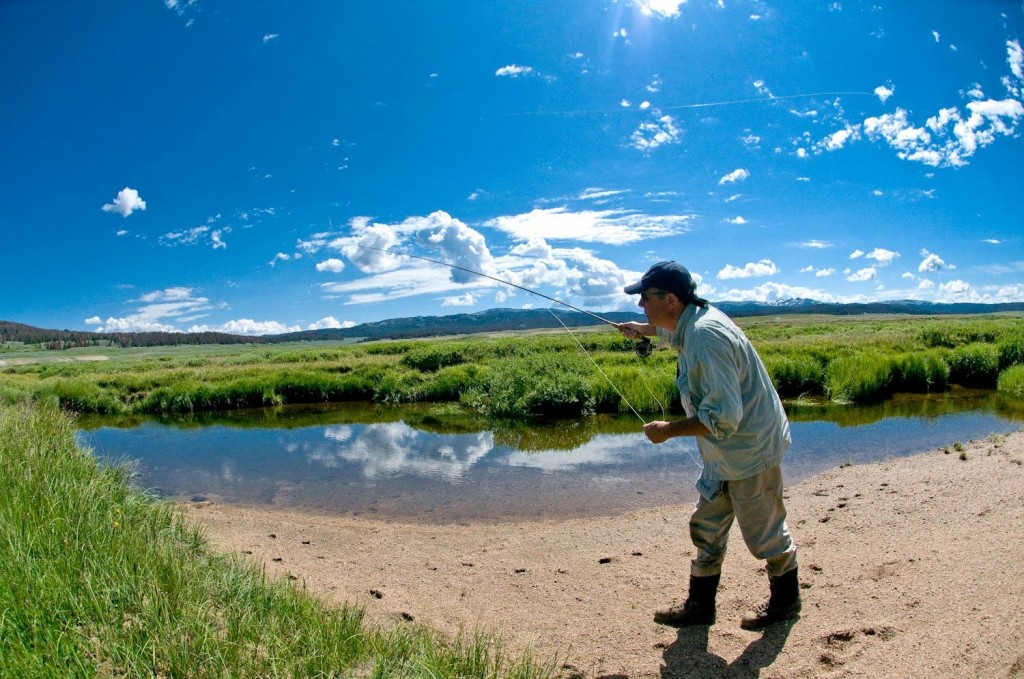
By Kent Klewein
MOST FLY ANGLERS WOULD AGREE THAT SUCCESS IN FLY FISHING IS OFTEN DETERMINED BY HOW WELL THEY CAN STAY OUT OF SIGHT FROM THE ASTUTE FISH THEIR TRYING TO CATCH.
If your finned adversaries are able to put a bead on you (identify you as a threat), there’s a good chance they’re going to ignore your flies or even worse, run for cover. Your ability to maintain a small signature on the fish’s radar should always be high on your objective list when you’re on the water fishing. Failing to do so, you’re going to be setting yourself up for defeat before you even make your first cast. So make a point to keep a sufficient buffer between you and the fish when you’re working water, and it usually will yield you higher catch rates.
There’s several variables anglers should look at and weigh-in to determine the size of the buffer they should maintain. Fast moving riffles (choppy water), freshly stocked fish, dingy water, overcast skies or fish positioned deep in the water column, are all variables that generally shrink the size of the buffer needed by anglers. Trout in these conditions usually feel relatively comfortable and safe, and therefore you can get away with moving in order to make precise presentations. On the other hand, if you’re dealing with flat water (slow moving or calm water), crystal clear water, wild educated fish or fish holding closer to the surface, anglers should keep as large of a buffer as they can, without losing their ability to execute a good presentation and drift.
It’s important to note that I think
Read More »Saturday Shoutout / Romano X 8
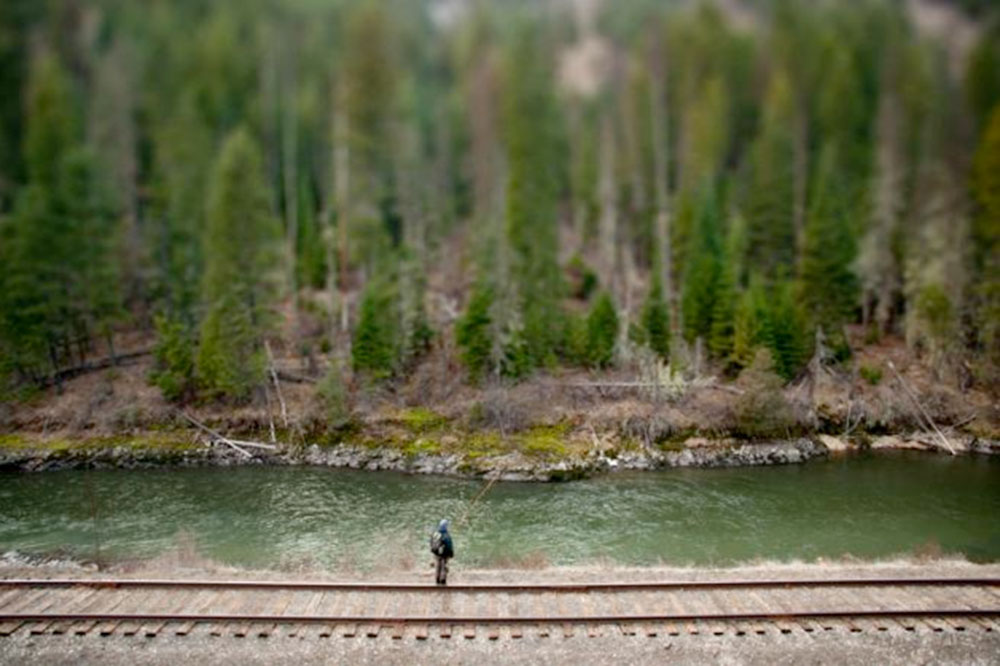
THERE ARE A WHOLE LOT OF GUYS OUT THERE SHOOTING FLY FISHING IMAGES.
Many of them are doing a really good job of it. However, and I don’t mean this to sound cocky, there are not a lot of them who’s work I covet. I seldom look at another photographer’s work and think, “I wish I shot like that.”
The one guy that consistently happens with is Tim Romano. It’s not because of Tim’s technique or because of the amazing places he visits. Both are pretty damned impressive but that’s not what I love about his work. It’s his eye.
That is to say that Tim just sees things I feel like I miss. Subtle things. Beautiful things. Things that when tied together tell a story that is greater than the sum of its parts. When Tim Romano writes a pot on Fly Talk titled “The 8 Best Fishing Photos I’ve Ever Taken,” you bet it gets my attention.
Tim writes;
As Kirk Deeter once said to me 11 years ago: “Understanding that it isn’t about the fish – it’s about the miles you travel and people you meet in order to find them.”
Some of you might object to this selection of my 8 favorite fishing photos as there’s more birds in the photos than fish, but that’s the beauty of such a subjective art. These are what I feel are my most finely crafted, fondest memories on the road and what I consider to be some of my best images that tell the story of some fishing adventure.
If you’re interested in that adventure, travel on over to Fly Talk and check out Tim Romano’s
The 8 Best Fishing Photos I’ve Ever Taken
Read More »